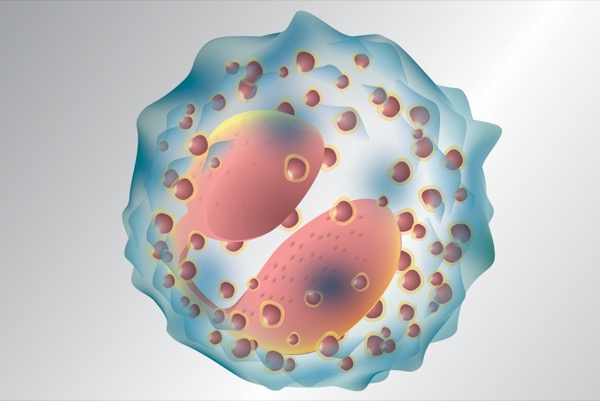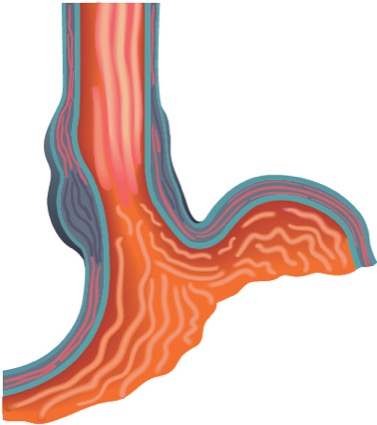
University of Kansas
School of Medicine
Kansas City
Welcome to another issue of Sharma’s Endoscopy Insights. In this issue, I discuss endoscopic bariatric therapies, gastroduodenal eosinophilia and the role of the functional lumen imaging probe for patients with esophagogastric junction outflow obstruction.
With the rising obesity epidemic, the use of minimally invasive endoscopic bariatric therapies has increased. Endoscopic gastroplasty has gained popularity. In the case of endoscopic sleeve gastroplasty (ESG), the procedure involves suturing the stomach lumen, most commonly by lacing continuous sutures in the gastric body with a suturing device. In contrast to ESG, the primary obesity surgery endoluminal (POSE) procedure uses nonrestrictive plications in the distal body of the stomach. More recently, POSE 2.0 was developed. This procedure involves creating full-thickness gastric plications using durable anchors to shorten and narrow the stomach. A new study shows that POSE 2.0 may be a good alternative for some patients.
In a new study of patients with moderate to severe chronic but unexplained abdominal symptoms, a high rate of duodenal and gastric eosinophilia (EoD and EoG, respectively) were found—levels to warrant the diagnosis of eosinophilic gastritis and eosinophilic duodenitis. The precise role of eosinophils in this patient population remains to be determined in future studies, but it appears gastroduodenal eosinophilia is more common than previously reported.
Esophagogastric junction outflow obstruction (EGJOO) is being diagnosed using high-resolution manometry (HRM), but according to the Chicago Classification version 4.0, additional testing with a functional lumen imaging probe (FLIP) or a barium study is required to confirm the finding of EGJOO on HRM. A new study confirms the use of FLIP panometry to facilitate the identification of patients who have EGJOO with positive treatment outcomes. For patients who had EGJOO diagnosed both by HRM and FLIP, 77% had a good outcome after achalasia-type treatment.
Evaluating POSE 2.0 for Obesity Treatment
(Clin Gastroenterol Hepatol 2023;21[1]:81-89)
In this prospective multicenter trial conducted in the United States and Spain, researchers evaluated the safety, efficacy, durability and physiologic effects of the POSE 2.0 surgery in adults with obesity.
POSE 2.0 uses a novel pattern of full-thickness gastric body plications to shorten and narrow the stomach with durable suture anchor pairs.

The procedure was conducted on 44 patients total (61% women; mean age, 45; mean body mass, 37 kg/m2) at Mayo Clinic in Rochester, Minn. (n=5), and in Barcelona and Madrid (17 and 22, respectively), where the procedure is already approved. Nearly all the patients (43) completed six and 12 months of follow-up, and 26 completed 24 months of follow-up.
The mean body weight loss at 12 months was 15.7% (±6.8%). Patients saw improvements in their lipid profiles, liver biochemistries and hepatic steatosis at six months. The surgery also was associated with a lower maximum tolerated meal volume (P=0.03), increased fullness (P<0.01) and improved eating behavior at six months (P<0.01), as well as an improvement in quality of life at six months (P<0.01). A repeat assessment in some patients at 24 months showed fully intact plications.
There were no reported serious adverse events, and the adverse event rate overall was low. The COVID-19 pandemic may have been a confounding factor in weight loss efforts during the second-year extension of the study, resulting in some weight regain.
Eosinophilia in Patients With Unexplained Abdominal Symptoms
(Gastroenterology 2022 Dec 24. doi:10.1053/j.gastro.2022.12.015)
A prospective multicenter study examined the discovery rate of EoG and EoD among patients in secondary GI care with unexplained moderate to severe abdominal symptoms.
The study recruited patients from 20 centers across the United States with up to six months of symptoms, including abdominal pain and cramping, early satiety, nausea, diarrhea, vomiting, loss of appetite, and bloating as well as a Total Symptom Score (Tss) of at least 10. Separately, the researchers recruited and evaluated asymptomatic people from four of the centers to act as controls (Tss, =1).
Of the 556 patients screened, 405 met the symptom criteria and underwent esophagogastroduodenoscopy with biopsies. Of those, 181 (45%) met the histologic criteria for EoG/EoD. After removing patients with active Helicobacter pylori infection, the rate of EoG/EoD was 43% (152/353).
Looking at all the symptomatic patients together, although gastric eosinophils did not correlate with the Tss (Pearson r=0.08; P=0.11), they correlated with early satiety (r=0.11; P=0.03). Similarly, while duodenal eosinophils did not correlate with Tss (r=0.06; P=0.24), they correlated with diarrhea (r=0.13; P=0.009).
The co-investigators concluded that these findings support other emerging evidence that eosinophilia could be more common in the United States than previously thought or increasing in prevalence.
Lumen Imaging for Esophagogastric Junction Outflow Obstruction
(Am J Gastroenterol 2023;118[1]:77-86)
In this observational cohort study, the co-investigators aimed to evaluate FLIP panometry among patients with EGJOO on HRM and Chicago v4.0 to assess the clinical and manometric associations as well as treatment outcomes.
The researchers evaluated 139 adults with manometric EGJOO (inconclusive per Chicago v4.0) who presented to the Esophageal Center of Northwestern University for evaluation of their esophageal symptoms between November 2012 and December 2019. Of those patients, 55 received an achalasia-type treatment, such as pneumatic dilation or botulinum toxin injection, and 36 received non–achalasia-type treatment.
A majority (77%) of patients with conclusive EGJOO by HRM-FLIP complementary impression had a good outcome after achalasia-type treatment, whereas no patients with conclusive EGJOO by HRM-FLIP had a good outcome after non–achalasia-type treatment. One-third of patients with a normal EGJ opening detected by FLIP treated with achalasia-type treatment had a good outcome, and nine out of the 10 patients with normal openings had a good outcome when they were treated conservatively.
The co-investigators concluded FLIP panometry provides a useful complement to clarify the clinical significance of an HRM/Chicago v4.0 EGJOO diagnosis and can help direct management decisions.
—Compiled and written by Jillian Mock
Dr. Sharma is a member of the Gastroenterology & Endoscopy News editorial board.
{RELATED-HORIZONTAL}

